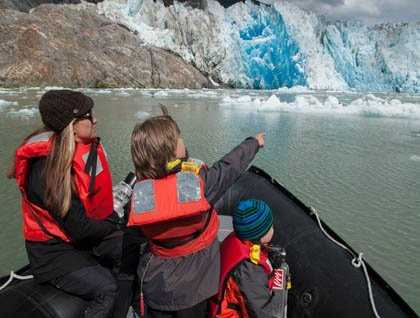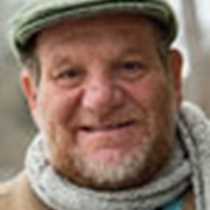Light rain greeted us this morning as we passed over the “bar,” the submerged terminal moraine left by the last advance of the glacier that filled and carved Tracy Arm.
Killer whales! Before breakfast the call came that we had a group of killer whales just in front of the ship. Captain Dion deftly steered the National Geographic Sea Bird to provide us with excellent views. The whales led us directly into Williams Cove, our destination for the morning.
After a series of introductions and briefings we headed out for our first exploration. Southeast Alaska is the northernmost extent of the most extensive temperate rain forest in the world. Hikers got to know the western hemlock—Sitka spruce forest and the bordering shoreline flora. Chocolate lilies, dwarf dogwood, cow parsnip, and silverweed were among the many flowers in bloom. Kayakers enjoyed the quiet and the unique perspective of being on the water, including a look an almost hidden waterfall. Our expedition landing craft enabled us to get up close and personal with icebergs. We also spotted many birds, including white-winged scoters, common mergansers, pigeon guillemots, and mew gulls.
By lunch we were making our way into the heart of Tracy Arm. This spectacular fjord was a favorite of John Muir’s. Cliffs towered thousands of feet above us, countless waterfalls graced the landscape. As we made our way closer to the Sawyer and South Sawyer Glaciers, the vegetation changed from temperate rain forest to lower growth dominated by alders.
For many, the day’s highlight was our late afternoon outing in front of South Sawyer Glacier. In small groups, we headed out in our expedition landing craft among icebergs and harbor seals. With a background of spectacular scenery, we weaved our way through the ice to fine viewing spots of the glacier. We watched huge calvings, as massive pieces of ice, larger than the Sea Bird fell from the glacier’s face.









